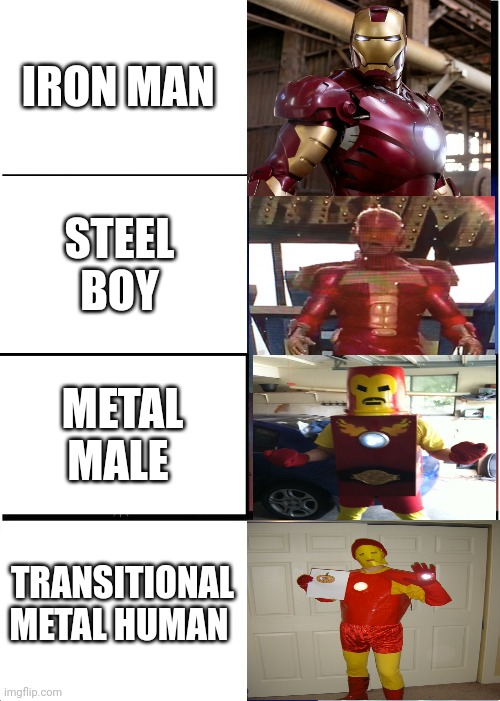Looking to forge a career in steel and iron ore? There’s still plenty of metal to mold, but the industry landscape is shifting faster than molten steel in a blast furnace.
The iron and steel industries remain backbone sectors of the global economy, providing essential materials for everything from skyscrapers to smartphones. Job opportunities span from dirt-to-delivery – mining operations, processing facilities, and steel production plants – with infrastructure projects worldwide keeping demand reasonably solid.

The State of Steel: Career Prospects in a Changing Industry
Let’s be real: this isn’t your grandfather’s steel industry anymore. While there’s still good money to be made and steady work available, you’re looking at an industry in transition. The global iron ore market is expected to grow at around 4% annually through 2030, with developing regions driving much of that demand through massive infrastructure investments.
Industry Headwinds (Or Why This Isn’t a No-Brainer Career Choice)

Price Roller Coaster
Iron ore prices aren’t exactly a picture of stability. Forecasts show prices dropping from about $100/ton in 2025 to around $78/ton by 2034. Why? China – the world’s biggest steel consumer – is pivoting away from steel-intensive infrastructure toward services and consumer goods. Add in oversupply issues and geopolitical drama, and you’ve got yourself a volatile market that makes career planning interesting.
Going Green (Ready or Not)
The steel industry has a carbon problem, and solving it means fundamental changes. The sector is under pressure to slash CO2 emissions by at least 22% by 2050, but meeting climate goals will require much more aggressive action. This transition is creating a weird dynamic where traditional iron ore demand may decline as scrap steel recycling increases, but specialized high-grade ores and green steel technologies open new doors.
Tech Revolution
Mining and steel making are becoming high-tech operations. Automation, digitalization, and AI are transforming how these materials are extracted and processed. This shift means fewer traditional labor jobs but more opportunities for those with skills in technology, environmental management, and data analytics. The modernization of mining operations means today’s steelworker might need to be as comfortable with code as with a hard hat.
Job Outlook: Not Booming, Not Busting

The employment picture is decent. In the US, iron worker jobs are projected to grow around 4% through 2031 – about average for all occupations. That translates to roughly 9,400 openings annually, driven mainly by construction and manufacturing demand.
Major employers include:
- Foundation and structural building contractors
- Nonresidential construction companies
- Fabricated metal product manufacturers
- Equipment contractors
Geographic concentration is real – states with major infrastructure projects like California, Texas, New York, Florida, and Ohio offer the most opportunities. The global mining sector, including iron ore, is expected to grow output value by approximately 3.5% annually through 2025 – stable, but not explosive growth.
The Iron-Clad Truth: Pros and Cons

Pros:
- Stable medium-term demand thanks to ongoing infrastructure needs
- Green transition opportunities in decarbonization technologies and specialized materials
- Technology adoption creating higher-skilled (and higher-paying) positions
- Regional job concentration allowing for specialized career hubs
Cons:
- Long-term price decline and market volatility make career stability questionable
- Environmental regulations increasing operational complexity and costs
- Shift to scrap-based steel making potentially reducing demand for raw ore
- Cyclical commodity markets tying your career to global economic swings
Career Paths Worth Exploring
The steel and iron ore industries offer diverse career tracks including:
- Mining engineering and operations – the extraction and processing specialists
- Metallurgy and materials science – developing and optimizing steel production
- Environmental and sustainability roles – supporting the critical decarbonization push
- Technology and automation specialists – implementing and managing the industry’s digital transformation
- Health, safety, and regulatory compliance – ensuring operations meet increasingly stringent standards
My Take: Is Steel Still a Solid Career Choice?

The steel and iron ore industries aren’t going away – we still need these materials for virtually everything in the modern world. But they’re changing dramatically.
If you’re looking for the stable, generational employment that characterized these industries in the 20th century, you might be disappointed. However, if you’re adaptable, tech-savvy, and interested in being part of an industrial transformation, there are legitimate opportunities.
The winners in tomorrow’s steel industry will be those who can navigate the decarbonization challenge while embracing technological innovation. The industry needs people who understand both traditional metallurgy and cutting-edge green manufacturing.
So is it a viable career path? Yes, but with caveats. Unlike your grandparents who might have worked at the same mill for 40 years, you’ll need to continuously evolve your skills to match the industry’s transformation. The steel industry of the future will look very different from today’s – and that means both challenges and opportunities for those willing to adapt.
Think of steel not as a safe, unchanging career harbor, but as a dynamic industry where the ground is shifting – sometimes quickly. Your success will depend less on the industry itself and more on your ability to position yourself at the intersection of traditional metallurgy and the new green, digital future of steel.




